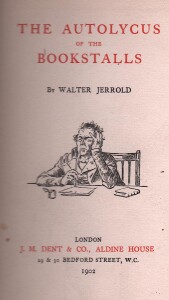The New London Spy (1966)

‘ Junk is other people’s left-overs, which they never usually wanted in the first place anyway. Junkards collect these left-overs, which they never usually know they wanted until they suddenly see them…’
‘…Everybody gathers a lot of junk. It is the diversity of personal litter that gives a room its ‘lived in’ character. The junk-hunter recognises this phenomenon and plays it . Instead of limiting his choice to beautiful things, he mixes them with objects that are attractive for other reasons. The skill is in the mixing, and the end product is a true expression of personal taste.
The good taste market has long ago been cornered by the antique dealers, the art-craft enthusiasts and the ‘contemporary’ Scandinavian designers. Their prices are as elegant as their goods. Junk is cheap: the problem is not how to afford it, but where to find it.
Modern junk abounds, particularly in the souvenir shop that cluster round the travel termini and the Places of Interest. You may occasionally find bits of new rubbish worth a nicker in your scheme of things. They may mellow with time, and accumulate charm; bit it is the old, démodé stuff that is most worth going after, because it is unfamiliar and has to be hunted for…
Market stalls can be deceptive. There is something about an open- air display that suggests cheapness and bargains. Dealers know this as well as shoppers. When a market has won a rotation among the connoisseurs, the pricier dealers join the bonanza and establish what are in effect branch businesses there.
This had already happened to the Caledonian Market before it was moved to its present pitch besides Tower Bridge Road. It has long been true of the Portobello Road, certainly at its southern end. When a dealer takes a stall in the Caledonian Market , he adds 20% to his prices, and the Portobello Road 40%. ‘
Junk stalls in 2025.
Caledonian and Portobello Road Markets.
It’s not true about the 20% and 40 % price rises. To your Jotter, who has acquired many a bargain at the Caledonian and Portobello Road Markets over the years, the prices are very fair, mainly because few dealers have the overheads that come with running an antique shop, but buyers must beware. The Caledonian, which opened in Bermondsey in 1950, was for many years an infamous ‘market overt’ , which meant that ‘ hot ‘ goods could be sold there in good faith between designated hours. This loophole was closed in 1995. After noon many dealers packed up their stalls, possibly for fear of being nabbed by the police, though for obvious reasons this seldom happens. When the New London Spywrote about the Caledonian, it was a very high quality antique market which occupied the whole of the square in Bermondsey village. Then, eighteen years ago everything changed. A towering hotel was plonked right in the middle of the square, taking up valuable space. As a result, many stallholders decided to decamp elsewhere, leaving behind a rump of devoted dealers determined to remain. But it’s not the same in 2025 as it was in its heyday. The number of stalls has diminished and the quality of the stock has declined and if it is visited at all by collectors, these are generally tourists attracted by the reputation it once had, rather than serious lovers of antiques.
As for the Portobello Road, the smartest dealers have either snazzy shops or only slightly less snazzy indoor cubicles that are often ( like the junk shops in the poorer parts of London ) ‘permanently shut’. But it is true that the junk is concentrated on stalls at the northern end of the Road, particularly Golborne Road, where, as well as decent antiques, there is real junk at very low prices of a quality similar to that to be found in your average village jumble sale. And yes, I do suspect that some of the ‘ here today and gone tomorrow’ traders in Golborne Road do indeed ‘destroy most of what they have not sold at the end of the day.’
Continue reading
 We at Jot 101 had not imagined the travel writer and biographer Walter Jerrold ( 1865 – 1929 ) to be a frequenter of second-hand bookstalls, but there he is as an unabashed collector of ‘unconsidered trifles ‘ in Autolycus of the Bookstalls (1902), a collection of articles on book-collecting that first appeared in The Pall Mall Gazette, Daily News, the New Age, and Londoner.
We at Jot 101 had not imagined the travel writer and biographer Walter Jerrold ( 1865 – 1929 ) to be a frequenter of second-hand bookstalls, but there he is as an unabashed collector of ‘unconsidered trifles ‘ in Autolycus of the Bookstalls (1902), a collection of articles on book-collecting that first appeared in The Pall Mall Gazette, Daily News, the New Age, and Londoner.

